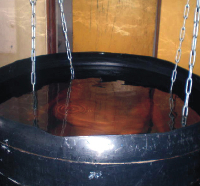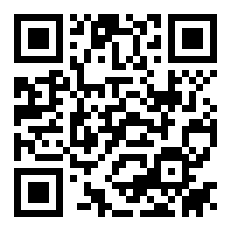Skinfold Parameter as Predictor of Body Density for Undergraduate Female Students in a Nigeria University
DOI:
https://doi.org/10.60787/tnhj.v13i1.153Keywords:
Body density, Skinfold thickness, Hydrostatic and underwater weighing, predictive equations, NigeriaAbstract
Background: The purpose of this study was to determine if some selected skinfold parameters are visible in predicting body density (BD) of undergraduate female students of Obafemi Awolowo University, lie Ife.
Methods: Seventy five non- athletic female students, age ranged from 18 to 30 years old from Obafemi Awolowo University (OAU) lie Ife, Nigeria participated in the study. Underwater weight was measured using Hydrostatic Weighing (HSW) equipment and skinfold was measured with Lange skinfold calipers using standard protocol at chest, biceps, triceps, forearm, mid axillar, subscapular, abdomen, supra illiac, thigh and lateral calf. Body density (BD) was calculated with underwater weight and skinfold measurement using some established equations. Descriptive statistics and Pearson Moment Correlation coefficient was used to analyze the data collected.
Results: The result showed that BD by HSW had significant negative correlation with skinfold at chest (r = - .505, p < .001), biceps (r = -. 302, p < .05), midaxillar, (r = - .328, p < .05), thigh (r = -.353, p < .05), abdomen (r =- .290, p < .05) and suprailliac (r = -, 371, p< .001).
Conclusion: The study concluded that the equation derived from the study is appropriate to determine the BD of Nigerian women.
Downloads
References
Kadiri S. Tackling cardiovascular diseases in Africa. British Medical Journal 2005; 331:711-712.doi;10:11361/bmj.7519.711.
World Health Organization Report. Non communicable diseases and mental health. Integrated Management of Cardiovascular Risk. Report of a WHO meeting 2002; Geneva, 9 12 July.
Latiffah A.L, and P. Hanachi. To Investigate theRelationofHypertensionandAnthropometricMeasurementamongElderly in Malaysia. Journal of Applied Sciences2008;8:3963-3968.10.3923/jas.2008.3963.3968.
RodgersEllie.Calculatingwaistcircumference. http: // www health. yahoo. com/ ency/ healthwise / aa 2005;128700.
Reuters Health . Thick waist predicts blood pressureriskstudy.http://www.Waistcircumference 2005;
Deepika, M.L.N. Ranjith K, Rani VU, Ishaq M. Jahan P. Familial Background of Complex Diseases in PCOS Probands of South Indian Population. Asian Journal of Epidemiology2012;5:50-55.10.3923/aje.2012.50.55
Gill BK. Sandhu PK. Factor Analysis of Anthropometric,PhysiometricandMetabolic RiskTraits Associated with Cardiovascular Diseases in North Indian Punjabi Adults. Journal of Applied Sciences2011;11:2843-2848.10.3923/jas.2011.2843.2848
George A. Bray M.D. Evaluation of Obesity. Postgraduate Medicine. 2003; 14. 6. 1-12.
MahajanR.GuptaK,KapoorV.ASystematicAccountofPathogenesis,DiagnosisandPharmacotherapyofMetabolic Syndrome: Things We Need to Know.InternationalJournalofPharmacology2010;6:338-345.10.3923/ijp.2010.338.345
England A. Bjorge, T, Tverdal A, Sogaard A.J, Obesity in adolescence and adulthood and the risk of adulthood mortality. Epidemology 2004; 15. 79 85. Doi: 10. 1097/01. PMD: 14712150.
Freadman D.S, Khan L.K, Dietz W.H, SrinivasanS.R,andBerensonG.S,Relationshipofchildhoodobesitytocoronary heart disease risk factors in adulthood. The Bongolisa heart study. Pediatrics 2001;108: 712 718.
Lau,D.C,DouketisJ.D.MorrisonK.M,Hramiak I.M. Sharma A.M, Ur. E., Obesity in Canada. Clinical Practice guidelines on management and prevention of obesity in adults and children. CMAJ 2007;176, S1 S13 PMID 17420281.
Adeyemo A, Luke A, Cooper R, Wu X, Tayo B, Zhu X, Rotimi C, Bouzekri N, Ward R: A genome-wide scan for body mass index among Nigerian families. Obes Res 2003, 11(2):266-273.
WHO. Expert consultation. Appropriate body-mass index for Asian populations and its implications for policy and intervention strategies. The Lancet; 2004; 157-163
British Heart Foundation: Diet, Physical ActivityandObesityStatistics.,2006[http://www.heartstats.org/datapage.asp?id=5749], Accessed 4 April,.
Flegal KM, Carroll MD, Ogden CL, Johnson CL: Prevalence and trends in obesity among US adults, 1999-2000. JAMA, 2002; 288:1723-1727.
Amoah AG. Obesity in adult residents of Accra, Ghana. Ethn Dis, 2003; 13(2 Suppl 2):S97-101.
Sodjinou R, Agueh V, Fayomi B, Delisle H: Obesity and cardio-metabolic risk factors in urban adults of Benin: relationship with socio-economic status, urbanization, and lifestyle patterns. BMC Public Health, 2008; 8:84.
Abubakari AR, Lauder W, Agyemang C, Jones M, Kirk A, Bhopal RS: Prevalence and time trends in obesity among adult West African populations: a meta analysis. Obes Rev, 2008; 9(4):297-311.
Ojofeitimi EO, Adeyeye AO, Fadiora AO, Kuteyi AO, Faborode TG, Adegbenro CA, Bakare OE, Setiloane K, Towobola KS: Awareness of obesity and its health hazard among women in a university community. PakistanJournalofNutrition,2007;6(5):502-505.
KolawoleW,SaniMU,YusufBO,Gbadamosi M, Gbadamosi A, Yandutse MI. Prevalence and determinants of obesity - a cross-sectional study of an adult Northern Nigerian population International Archives ofMedicine2011;4:101-5doi:10.1186/1755-7682-4-10
Kadiri S, Salako BL. Cardiovascular risk factors in middle aged Nigerians. East Afr Med J, 1997; 74(5):303-6
Kerksick C, Thomas A, Campbell B, Taylor L, Wilborn C, Marcello B, Roberts M, Pfau E, Grimstvedt M, Opusunju J. Effects of a popular exercise and weight loss program on weight loss, body composition, energy expenditure and health in obese women. Nutr Metab (Lond) 2009;6:23.
Evanswww.MedicalAdvisor.Org.Hydrostatic weighing Techniques 2005.
Ellis-Christensen Tricia. What is hydrostatic weighing? .http://www.hydrostaticweighing.com2007.
CollinsAnnes.Bodyfatcalculator.http://www.hydrostaticweighin.com//measuringbodycompositions 2007.
RezaY. McEntee E, McEntee M, Brines M. AnthropometricVariablesAccuratelyPredictDualEnergyX-RayAbsorptiometric-DerivedBodyComposition and Can Be Used to Screen for Diabetes. PLoS One 2011;6(9): e24017. doi:10.1371/journal.pone.0024017. PLoS One www.plosone.org
MarceloS,FilhoJF.NetoCSP. Development and validation of specific anthropometric equations to determine the body density of Brazilian Army military women. Rev Bras Med Esporte 2004; 10, (3) 147-151
JacksonA.S.Pollock,M.L.WardA.Generalized equation for predicting body density of women. Medicine and Science Sport and Exercise. 1980; 12. 175 182.
Pollock, M.L. Schmidt D.H. Jackson A.S. Measurement of cardio respiratory fitness and body composition in the clinical setting. Compr. Ther. 1980; 6: 12 2731JacksonA.S,PollockM.L.Practical

Downloads
Published
Issue
Section
License
Copyright (c) 2015 The Nigerian Health Journal

This work is licensed under a Creative Commons Attribution-NonCommercial-NoDerivatives 4.0 International License.
The Journal is owned, published and copyrighted by the Nigerian Medical Association, River state Branch. The copyright of papers published are vested in the journal and the publisher. In line with our open access policy and the Creative Commons Attribution License policy authors are allowed to share their work with an acknowledgement of the work's authorship and initial publication in this journal.
This is an open access journal which means that all content is freely available without charge to the user or his/her institution. Users are allowed to read, download, copy, distribute, print, search, or link to the full texts of the articles in this journal without asking prior permission from the publisher or the author.
The use of general descriptive names, trade names, trademarks, and so forth in this publication, even if not specifically identified, does not imply that these names are not protected by the relevant laws and regulations. While the advice and information in this journal are believed to be true and accurate on the date of its going to press, neither the authors, the editors, nor the publisher can accept any legal responsibility for any errors or omissions that may be made. The publisher makes no warranty, express or implied, with respect to the material contained herein.
TNHJ also supports open access archiving of articles published in the journal after three months of publication. Authors are permitted and encouraged to post their work online (e.g, in institutional repositories or on their website) within the stated period, as it can lead to productive exchanges, as well as earlier and greater citation of published work (See The Effect of Open Access). All requests for permission for open access archiving outside this period should be sent to the editor via email to editor@tnhjph.com.





